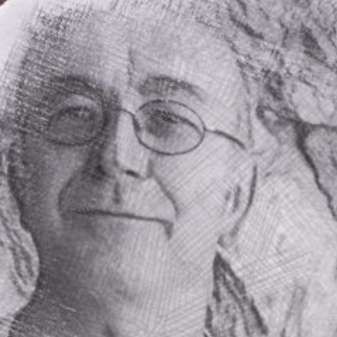RSNO music director Peter Oundjian likes to extend a welcoming word. He often saves this until after the opening item, but perhaps felt here that some pointers might maximise audience enjoyment of the opening item, Messiaen’s 1930 religious triptych Les Offrandes oubliées. Of specific interest was the composer’s synaesthesia, which, as I’d just read in David Kettle’s fine programme note, resulted in Messiaen experiencing harmony in terms of colour. Oundjian read out the composer’s own words on this phenomenon.
The three movement titles movements go some way to explaining that of the work as a whole (“The Forgotten Offerings”). The languorous and often achingly beautiful harmonies of “La Croix” (“The Cross”), here sensitively rendered by RSNO strings, depict Christ’s suffering for Man’s redemption.
This is startlingly interrupted by “Le Péché” (“Sin”), in which the orchestra, particularly its explosive brass, portray Man’s forgetful fall from offered grace. Guest principal trumpet Philippe Schartz really stood out here – the first of such moments across the programme. This cinematic section’s contrast with its more still neighbours was electrifying. In “L’Eucharistie” (“The Eucharist”) we glimpse peaceful union with the divine, accessible through the sacraments. The movement’s long notes transmit a timeless feel and, while enjoying this, I was struck by an important element of “seeing the music” you’re hearing. The timelessness, familiar to me through many listenings at home, changed when limbs entered the equation; whether bearing baton or bows, orchestral arms endow the music with a kinetic clarity. This was a truly fine performance which may well bring into Messiaen’s embrace many who might previously have avoided his music.
Russian pianist Nikolai Lugansky is something of a regular RSNO guest, having performed the third piano concertos of both Rachmaninov and Prokofiev in the last two years. Indeed, in the programme, Lugansky cited the RSNO’s “very special ability to make chamber music out of the most symphonic repertoire”. This was especially evident in the closing movement of Beethoven’s Emperor concerto, where the baton, so to speak, frequently passes from soloist to orchestra – sometimes mid-phrase.
Lugansky wears his immense technical accomplishment lightly, but even this generally understated powerhouse of a player couldn’t resist an explosive and hugely enjoyable flourish at the work’s close. The highlight of the performance, for me, was the central Adagio un poco mosso. Its B major tonality is far removed from the imperial E flat major of the outer movements and it leans towards the timelessness of the Messiaen, although by very different means. One such is the pianist’s right hand playing twos and fours against the left hand’s threes. This progress-masking texture was beautifully delivered. There were some lovely orchestral sounds too, especially a little moment of clarinet and flute counterpoint sensitively played by John Cushing and Katherine Bryan respectively. There was tumultuous applause for all concerned at the work’s close, especially Lugansky, who seems to have won a lasting place in Edinburgh music lovers’ hearts.
I though it a lovely touch of programming that Messiaen’s first orchestral work was mirrored by Rachmaninov’s last. His 1940 Symphonic Dances is a work of summation, quoting themes from earlier pieces. With the exception of the central Andante con moto (“Tempo di valse”) it’s unclear exactly which dances Rachmaninov had in mind. Had choreographer Mikhail Fokine’s sudden death not put paid to discussions about turning the work into a ballet, we may have had a clearer idea.
Following a short introduction the somewhat negatively titled “Non allegro” sets off buoyantly, an atmosphere which was excitingly communicated here. This movement seemed to mix Rachmaninov’s western and eastern credentials to great effect. The main theme brims with an American, can-do confidence. A contrasting theme, wonderfully played on alto saxophone by Simon Haram, had more the feel of a Russian folk melody. RSNO leader Maya Iwabuchi featured in a lovely, rhapsodic solo passage in the central waltz-like movement.
As much as surveying his works, the closing movement hints at possible end-of-life deliberations. In addition to the Dies irae theme, a frequent companion, Rachmaninov also quotes “Blagosloven yesi, Gospodi” (“Blessed be the Lord”) from his 1915 All-Night Vigil. Despite the many appearances of the former in his work, it’s difficult to believe that Rachmaninov worried much about the threatened ire, given some of the jolly treatment it receives here – unless, of course, this is the compositional equivalent of whistling in graveyards. The piece offers some great showcase moments for orchestra members. The two aforementioned woodwind players joined in a lovely trio moment with RSNO principal bassoon David Hubbard. Duncan Swindells’ bass clarinet made its presence felt. Vigorous strings, brass and percussion ensured a great finish and well-deserved applause.


